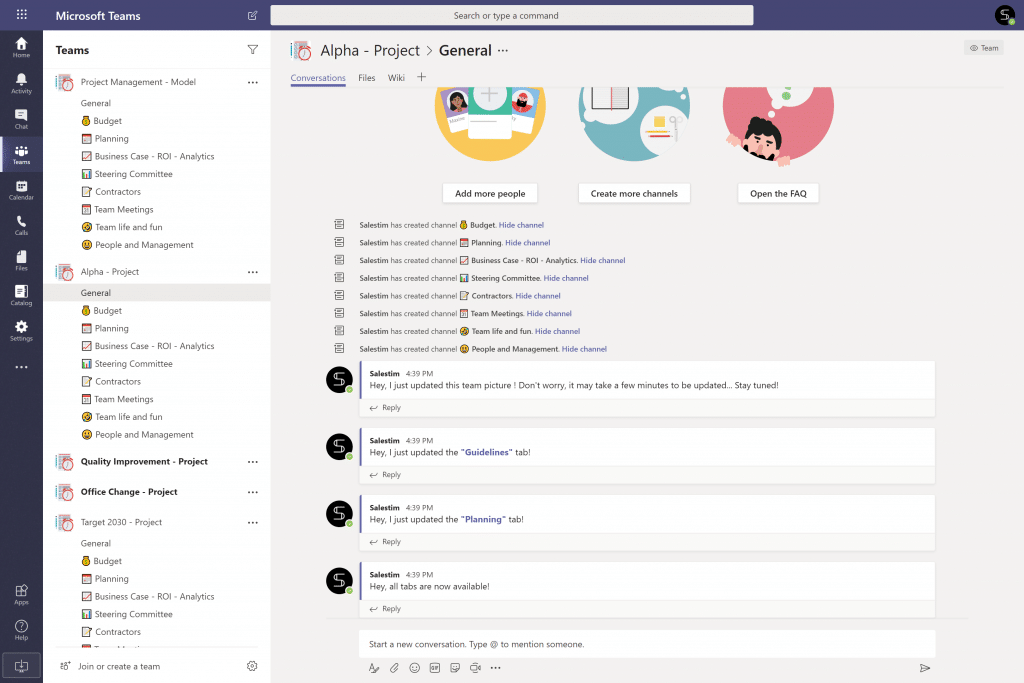Most of today’s businesses are project-oriented, and the project management business model is found in all areas: from construction to IT. Every project manager knows that to achieve project goals and manage projects effectively, it is necessary to create an effective workspace where project members can collaborate. And Microsoft Teams is the perfect place for sharing project content, setting online meetings, and tracking project results. Today we are going to show you how to build a Project Management template in Microsoft Teams with pre-defined content and governance settings.
And if you’re looking for an ultimate guide on how to use Microsoft Teams for project management, head over here.
Why do you need a Project Management template in Microsoft Teams?
Improve operational efficiency
With a project management template, you will get the same level of execution from one project to another. You can run projects and track progress in a structured way with pre-defined rules and standards.
Reduce time spent on manual tasks
Next, as a project manager, you will not build dozens of project teams from scratch once a new project is launched. With team creation from templates, you can save your time and stay focused on essential tasks and project KPIs.
Avoid Teams sprawl
With pre-configured templates, you can avoid Teams sprawl. Forget about collaboration silos and teams’ duplication. With project management teams templates, you will get dozens of structured teams to collaborate on the project in a few seconds with all needed content and settings.
Structure your teams without overloading IT
Manage governance policies with Microsoft Teams collaboration templates and set up governance rules without overloading IT. Set up naming rules, manage teams’ privacy, membership policies, and much more.
Project Management Collaboration Template capabilities
Collaborate on projects through standard and private channels
First, you need to create different channels where your project members can collaborate and share project content. With pre-configured channels, your teammates will know exactly where they need to search information, start a conversation, and share news and updates without loss of information. Let’s see an example of channels for project management template:
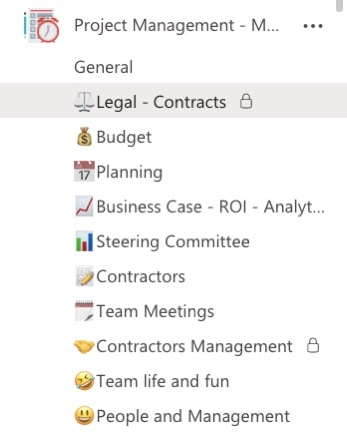
- Legal- Contracts – private channel to share signed contracts and to work on agreements with external agents.
- Budget – to check whether the project is sticking to its budget.
- Business Case- ROI- Analytics – to build and share project reports, track KPIs, and perform effective analytics.
- Planning – to perform daily tasks, track projects progress, and quickly react to any changes.
- Steering Committee – to have a conversation with the project expertise community, stakeholders, and experts.
- Team meeting – to schedule daily and weekly meetings with a team for brainstorming, presentations, reporting, etc.
Share project documentation
Next, you can upload project documentation and create different folders to structure file sharing. For example, you can upload files templates and guidelines for:
- Business Case – Project Proposal
- Project Planning
- Quality Improvement Project Template
- Project Report Template
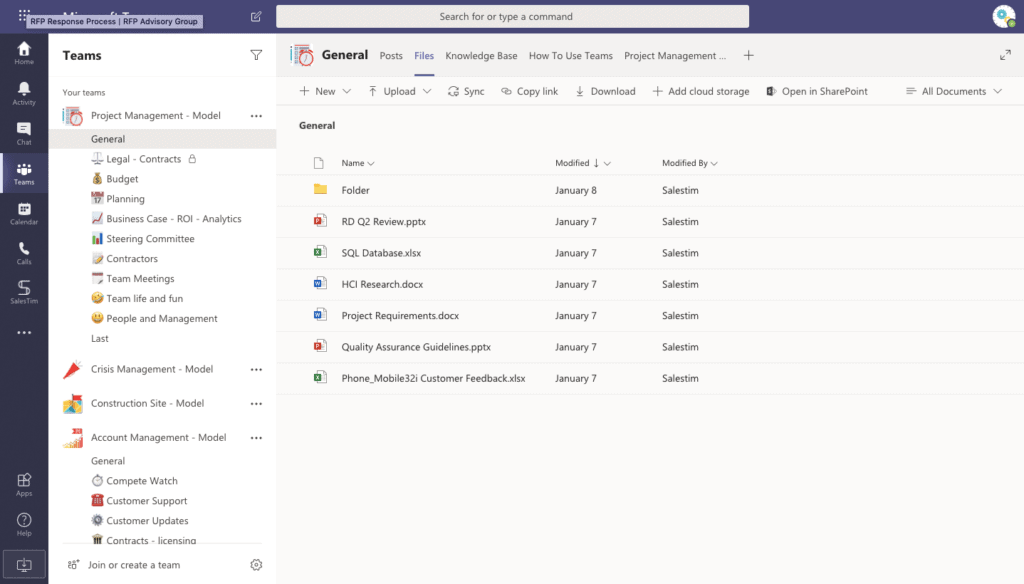
Pre-built project tasks
Planning is key to run a project successfully. Use Microsoft Planner to build boards with tasks depending on project steps. With Microsoft Planner you can create tasks and assign them to any person in your organization, add checklists, attach files and links, and start a conversation right on the task card.
Project management expertise community
When you are working in a large organization, it is important to communicate not only with your teammates but also with colleagues from other departments. Therefore, you can stay up to date with organizational challenges and follow the common vision and goals. Add Yammer community to have quick access to organizational news, changes, upcoming events, and updates. Also, you can add a tab with followed #project_management tag to stay informed about any news, tips, and advice to run a project successfully.
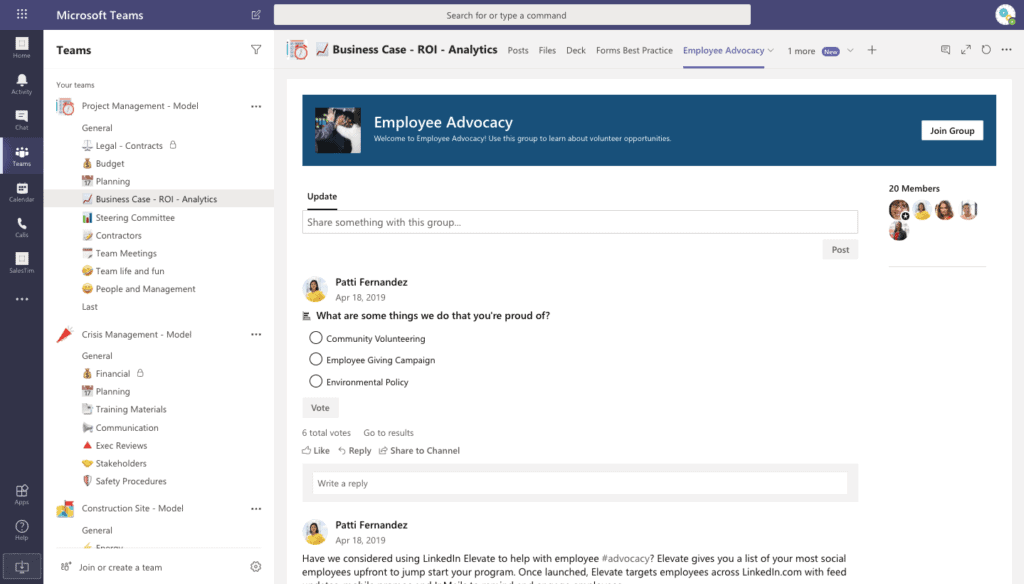
Set up team meetings with Calendar Tab
Add calendar tab to Team meeting channel and schedule team meetings there. With this tab, your teammates will be able to quickly plan their daily schedule and organize themselves according to the team’s events.
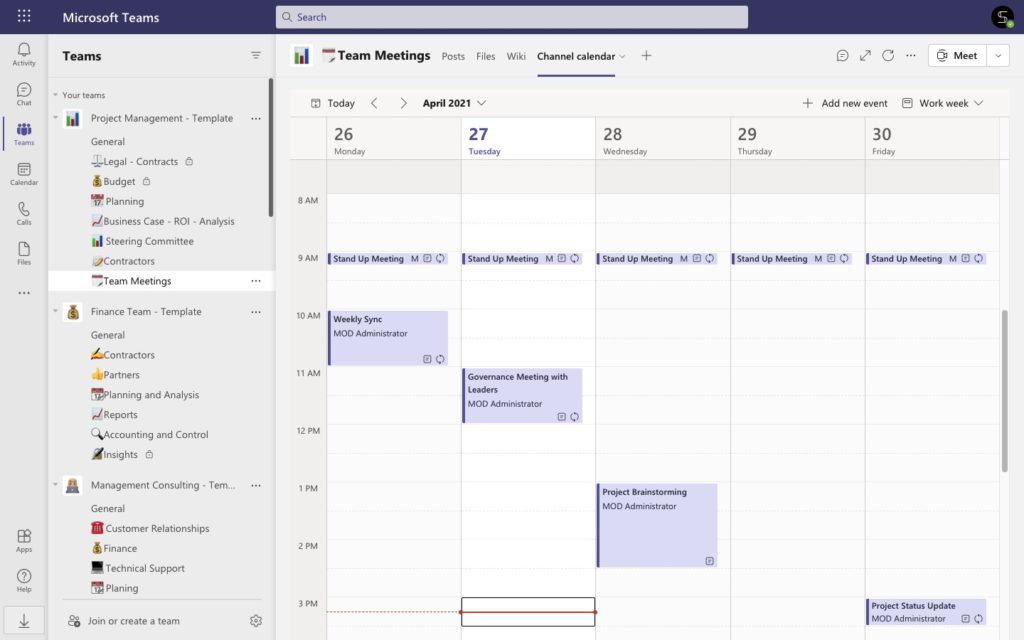
Track project results with Forms
To quickly collect and share project results you can add Microsoft Forms as a new tab into the Analytics channel. Your colleagues can fill out this form daily and help managers to stay updated on project progress. Share Forms results with stakeholders and steering committee and get their feedback.
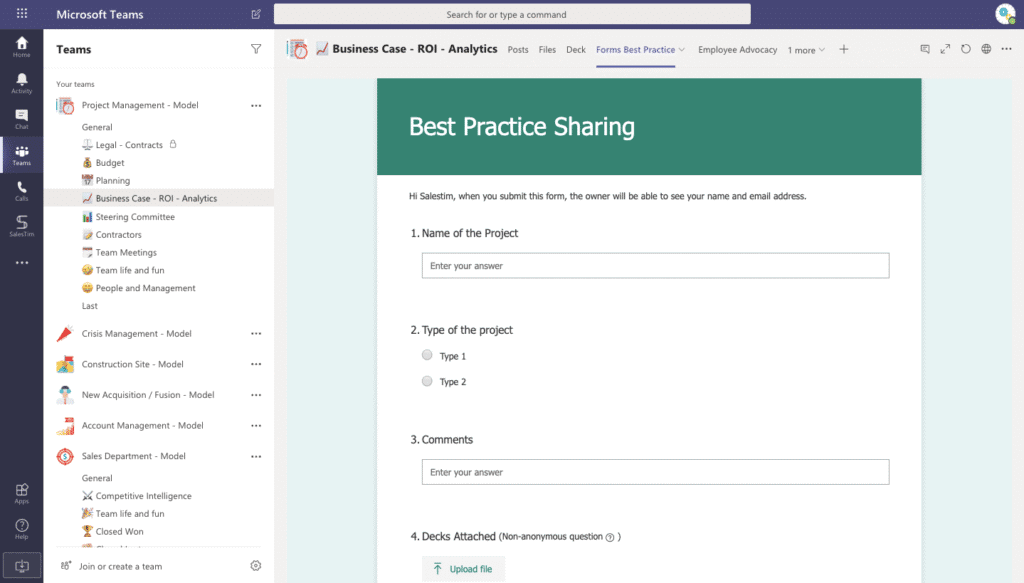
Add project management apps
Using 3rd party apps to manage projects? You can easily integrate them right into your Teams environment. By integrating 3rd party apps, you can collaborate on content with other teammates even if they don’t have a license for a specific app. Let’s describe some of them.
Trello – is one of the most popular app to manage projects. Here you can perform effective task management, manage project progress and track your team’s results. With Teams and Trello integration you can add any existing dashboard as a new tab in your project management team and collaborate on tasks with your colleagues.
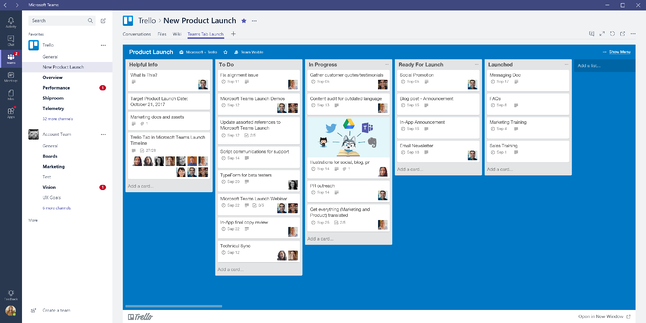
With Asana you can run projects effectively with customized visuals such as list views or board views to manage depended, overlapping, and unscheduled tasks. By connecting Asana with Teams, you can collaborate on Asana tasks and keep work connected without leaving your Teams environment.
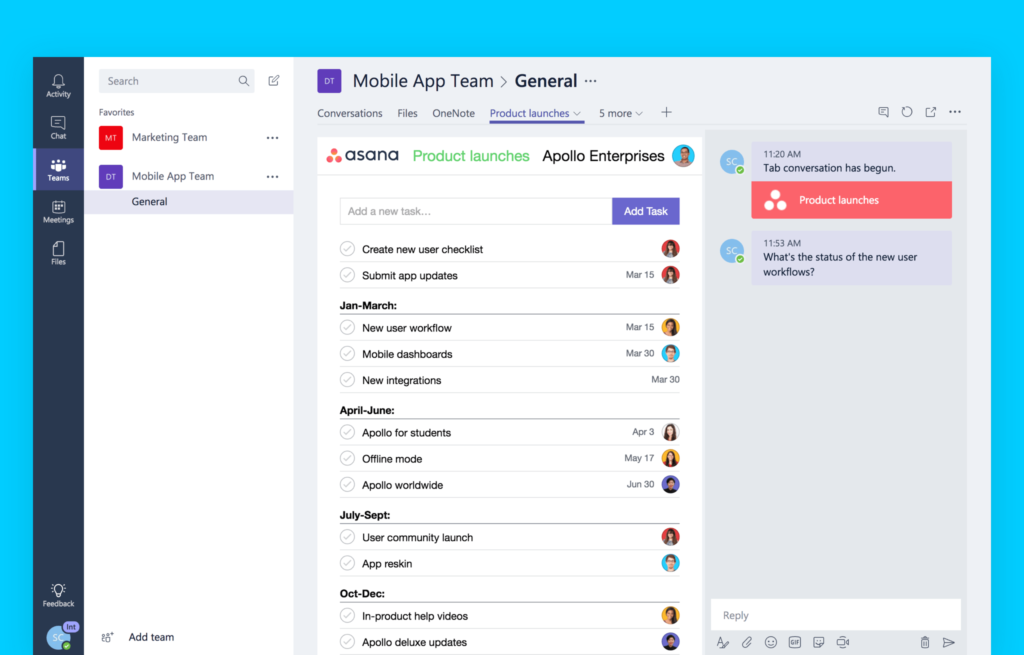
After integrating Wrike into your Teams environment, you can add folders and projects as new tabs to a dedicated channel. Your project team can view all the tasks, edit key task details, add comments, and mention other colleagues right in Teams environment.
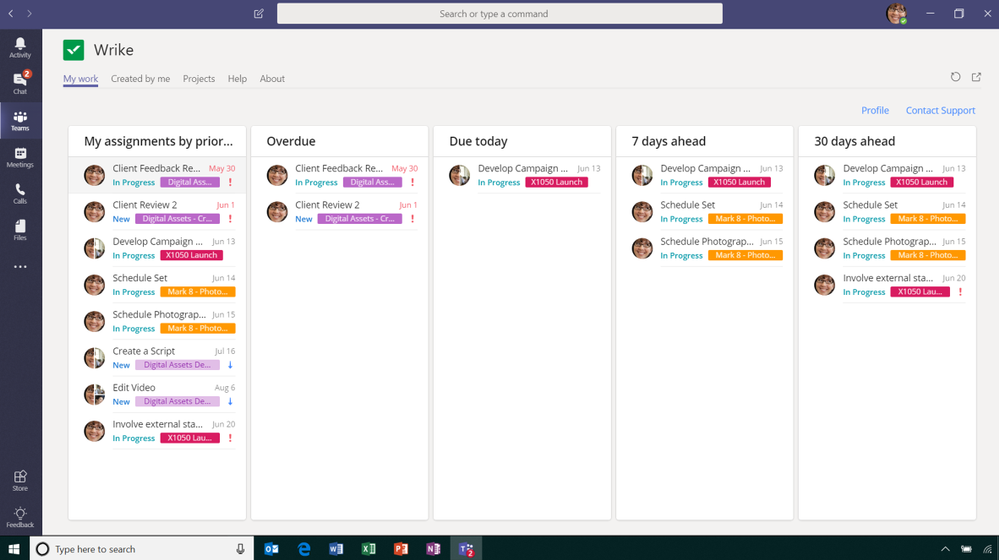
Read more about the best project management apps for Microsoft Teams
Structured teams with all rules
Next, manage team settings to define the rules and manage members’ permissions. For example, you can limit private channel creation, uploading custom apps, tabs updating and creation, etc. Do not forget about guest permission and decide if the team’s guests can create and update channels or not.
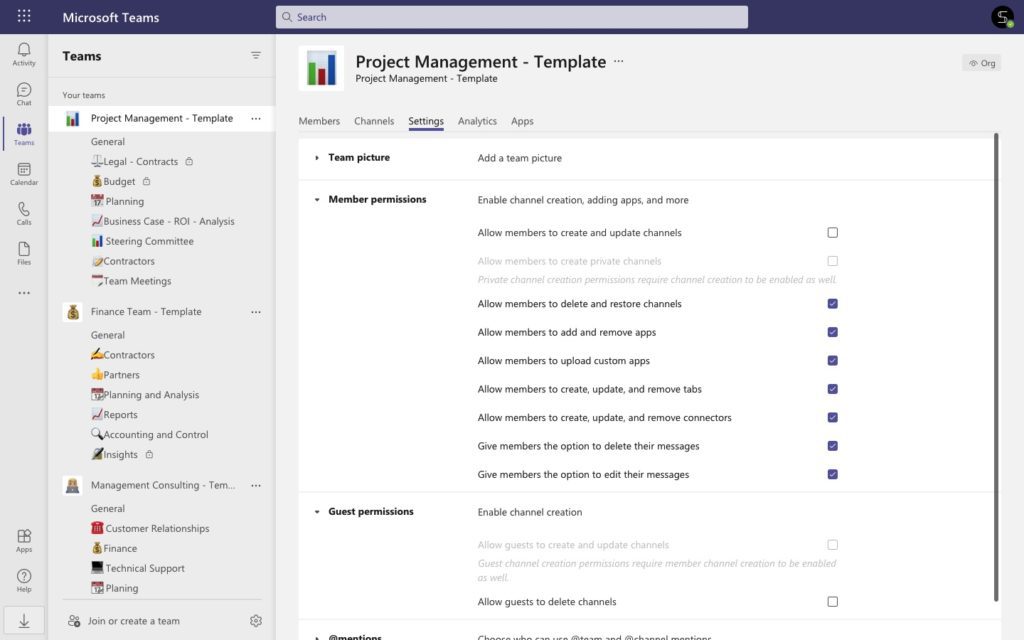
White Paper: Microsoft Teams for Project Management
Learn how to het the most out of Microsoft Teams for project management: team and channel examples, use cases, useful apps and other tips
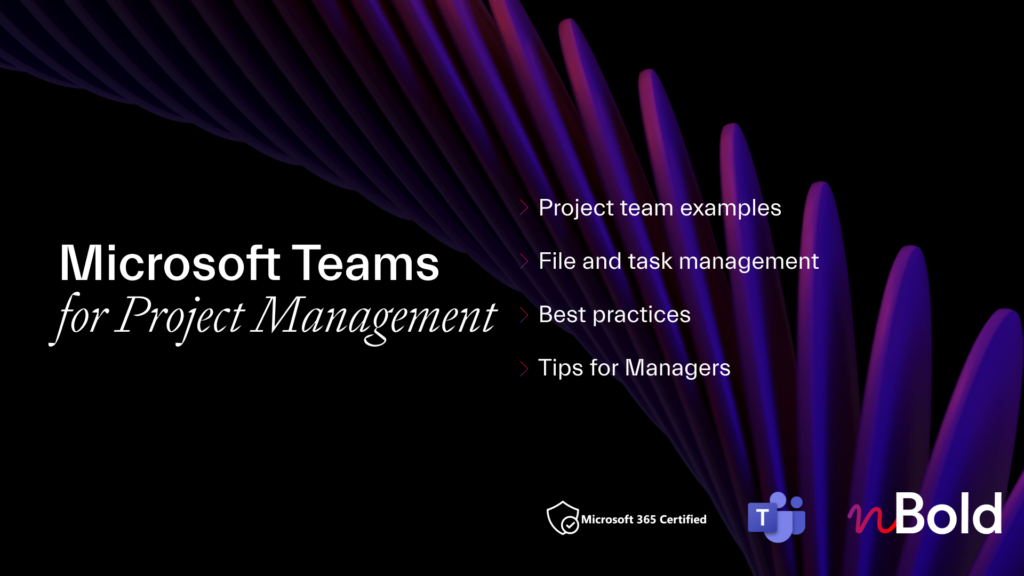
Governance policies for your Project Management template
Set up Naming Convention for Project Management Teams template
Keep your teams for project management structured and organized with a naming convention. You can define naming rules at the template level. A newly created team from your template will be automatically named based on fixed or dynamic naming rules with a naming convention. Let’s see some examples.
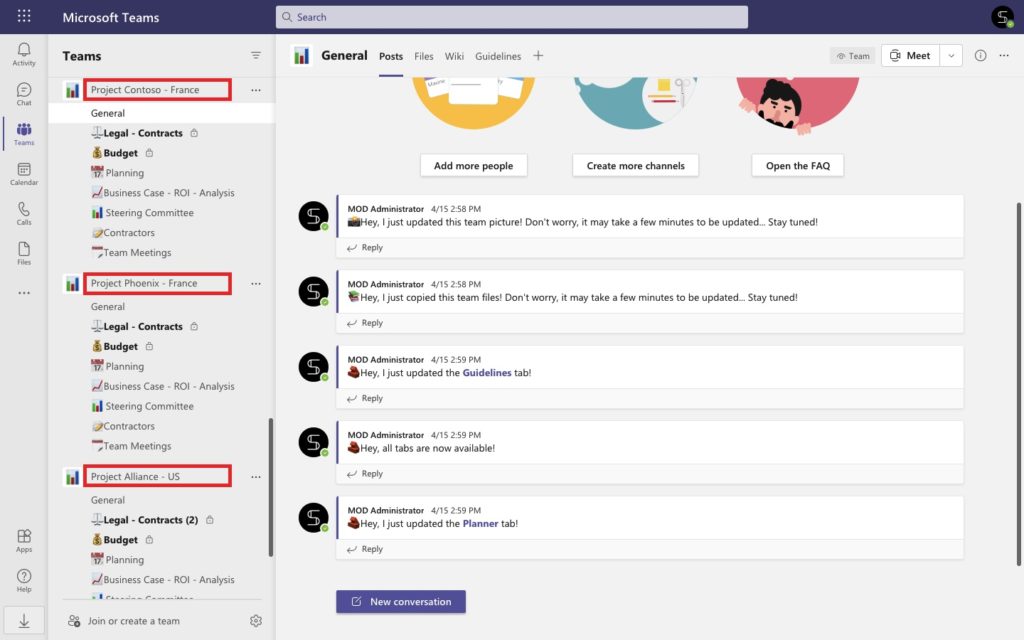
With Static Naming Convention you can add fixed prefix or suffix to the request team name. For example:
Name of the project – Project management
Project – Name of the Project – France
Name of the project – Marketing Department
With Dynamic Naming Convention you can add prefix and suffix based on Azure AD data. User’s country, department, role, preferred language, and so on. For instance:
Project – Name of the project – user department
Office 365 usage location – Name of the project – project management
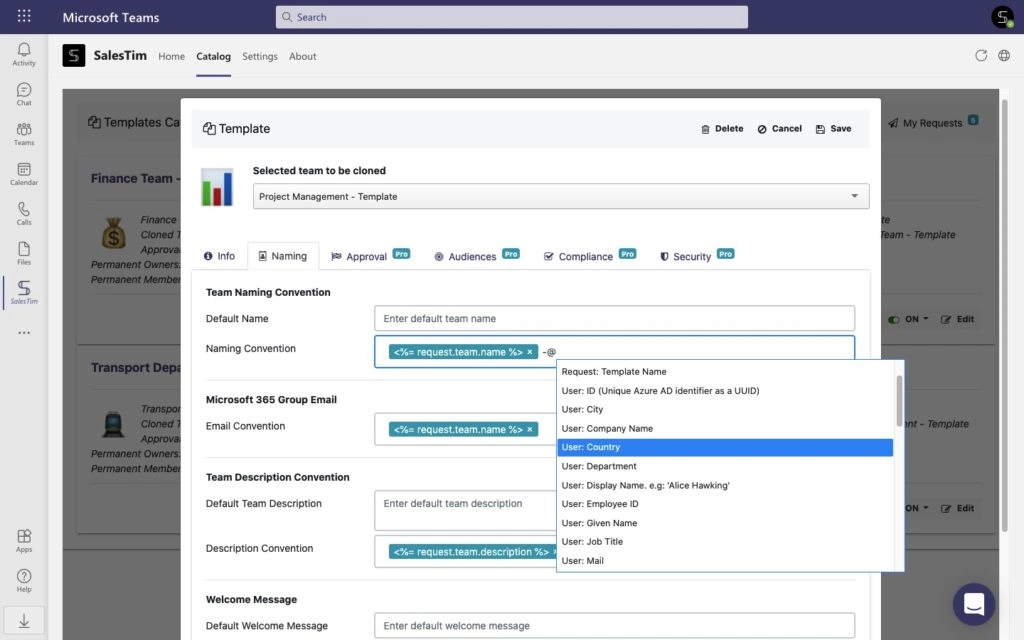
Moreover, you can add here custom attributes from your Active Directory. Add your internal Department ID, security group, and so on depending on the use case meeting your organizational needs.
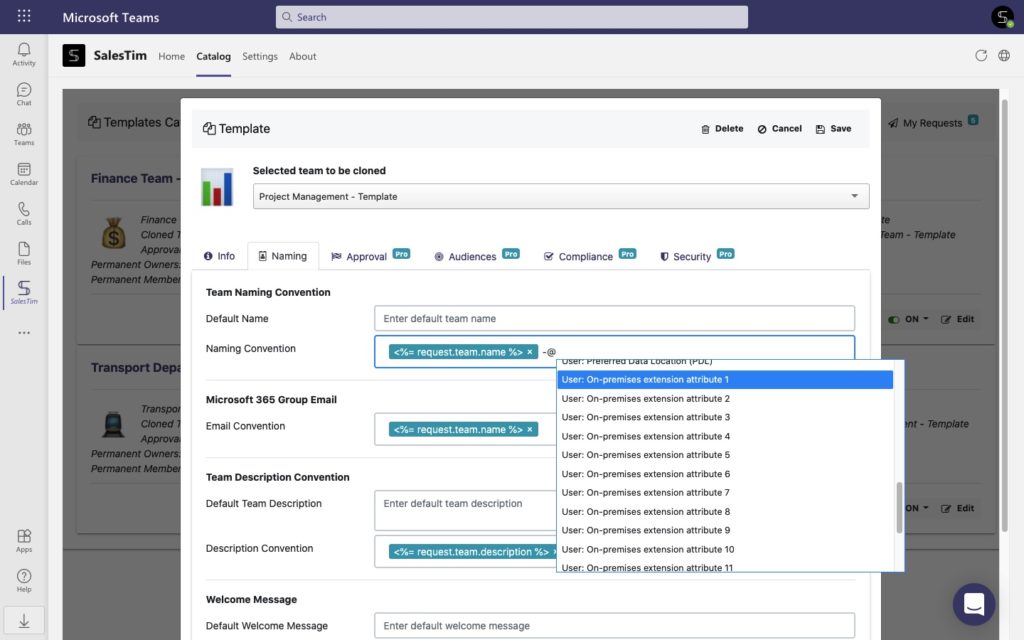
Define who can use your template
Next, you can define who can use your project management template. Based on Azure AD data, you can establish targeting audience rules. For example, only people from your marketing department can create teams from your project management template. Or maybe only colleagues from France will see your project management template in their templates catalog. Capabilities are endless with dynamic and custom attributes.
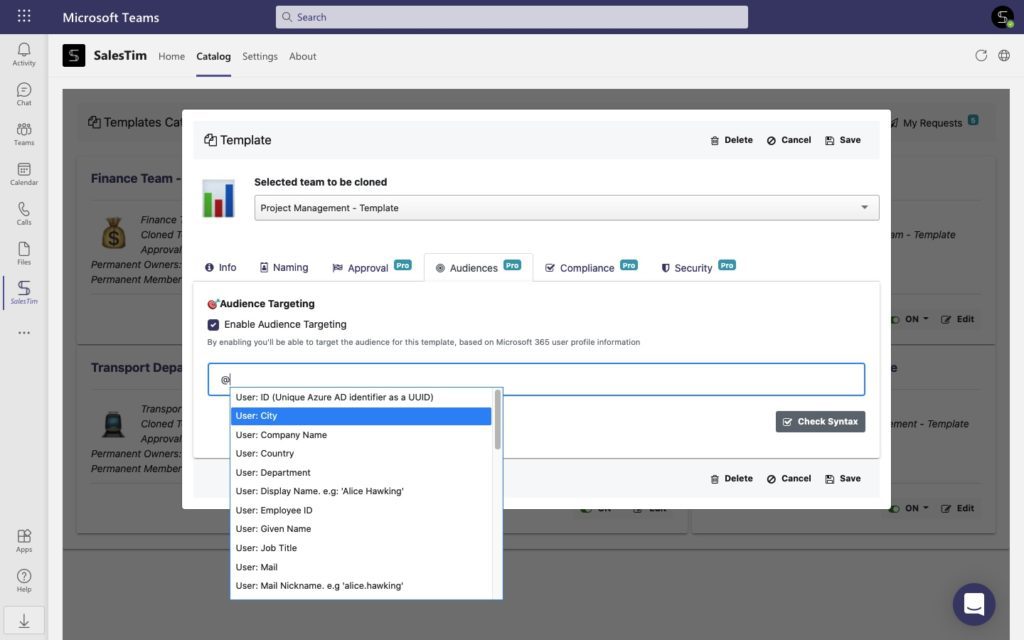
Add approval workflow to limit team creation from project management template
If you would like to limit team creation you can establish an approval process. To do this, you will need to enable approval during template creation and choose any person in your organization.
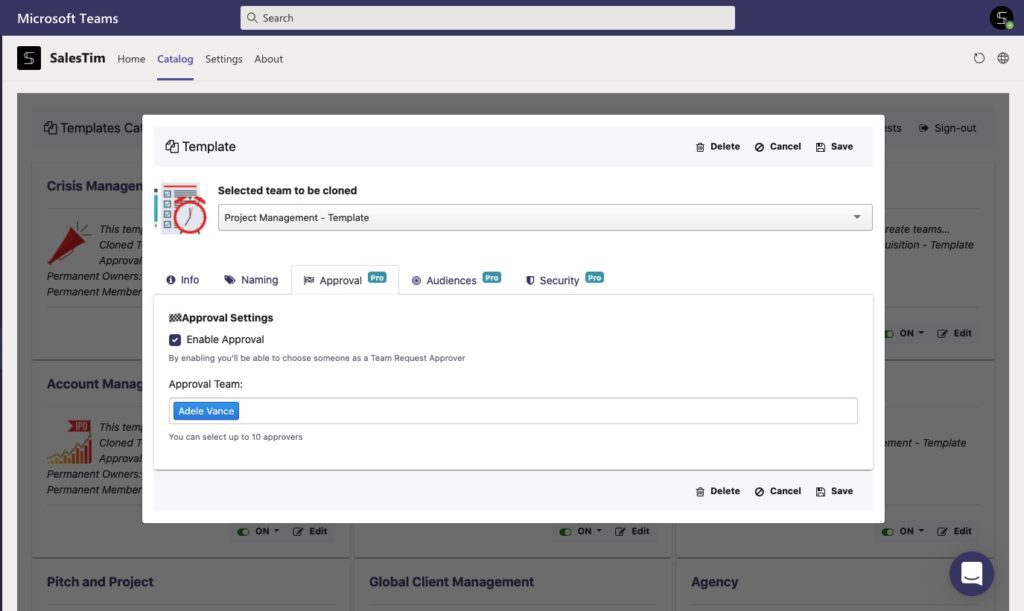
With this option, the approver will receive an email each time someone wants to create a team from your template. They will get all the needed information about the requester, the team requested name, and description. In just a few seconds they can approve or reject team creation. If the request is approved, team provisioning will start automatically.
Add relevant people to your project team
Next, you can manage membership policies during project management Teams template creation. For example, you can add permanent members and owners. This means that they will be added automatically each time a team is created from your template. It’s a useful option when you need to have the same people from one project to another, for example, project experts, project manager, workers from the legal department, and so on.
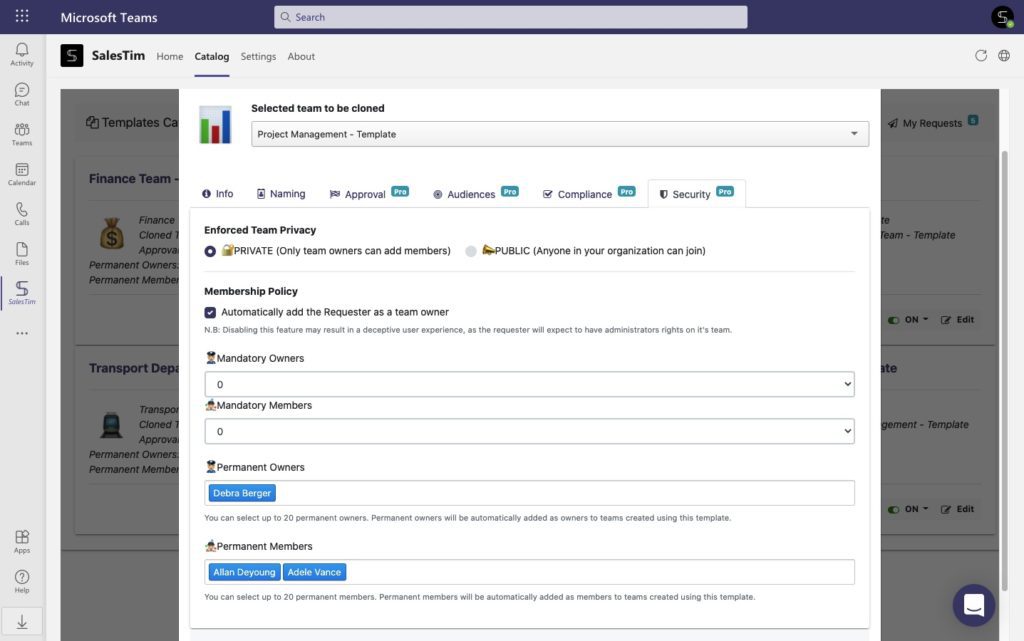
Moreover, here you can set up the mandatory number of owners and members in a team. With this option, you will avoid unused collaboration silos with no members and loss of information when a team owner leaves your company.
Automate your project management in Microsoft Teams
With Power Automate you can build any automation workflow to streamline processes and save your time on manual tasks performing. Using Microsoft Teams connector, you can manage notifications, optimize team creations, set up approval processes, and so on.
In our blog, we’re discussing how to automate team creation from templates, and more. But today let’s discuss some use cases around the project management template.
Multiple Stage Approval workflow for big projects
First, let’s say you would like to set up an advanced approval workflow for big projects. You’re creating a Project management template and then you need to set up a multiple-stage approval workflow. This means, when someone wants to create a team from your project management template, he or she needs to send a request to the operational manager. After the operational manager approves team creation, the same request must be sent to your Teams admin.
Wondering how to build this workflow? With nBold connector (read here how to add nBold connector) you can build an automated workflow in a just few seconds and run the approval process. Here we describe in detail how to build this flow
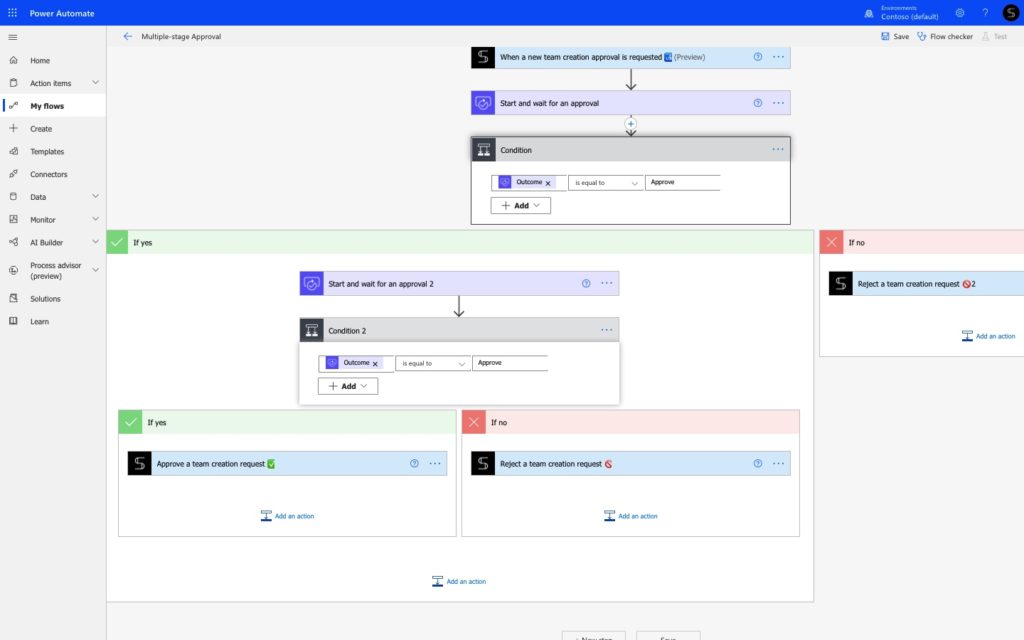
Help project managers to be onboarded with automated emails
Imagine, project manager just created a team from your project management Teams template. There are many channels, tabs with apps, guidelines, and so on. Are you sure that he will understand the purpose of each piece of content?
To make sure that everything is clear and team members will use a team according to established rules, you can send an onboarding email to the requester. Therefore, the requester will receive an email with your step-by-step guide on how to use a team and other useful content.
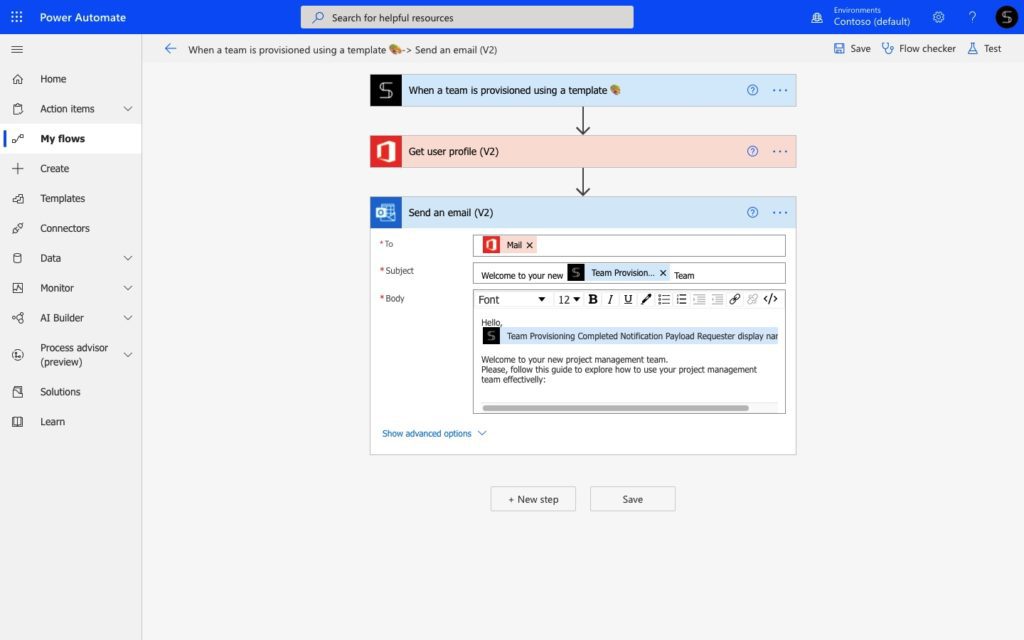
To build this workflow just use trigger from nBold “when a new team creation is requested” and choose an action from Outlook connector. You can even build a scheduled flow. With this option, you can send an email right after the team creation request was sent and maybe two days after team creation.
Integrate your own 3rd party app with Power Automate and nBold
With nBold connector you can perform many additional use cases, including team creation from any 3rd party app available in Power Automate. Wondering how to create a team when a new project is appearing in Jira? Or maybe you think about channel creation when a new Trello dashboard is created?
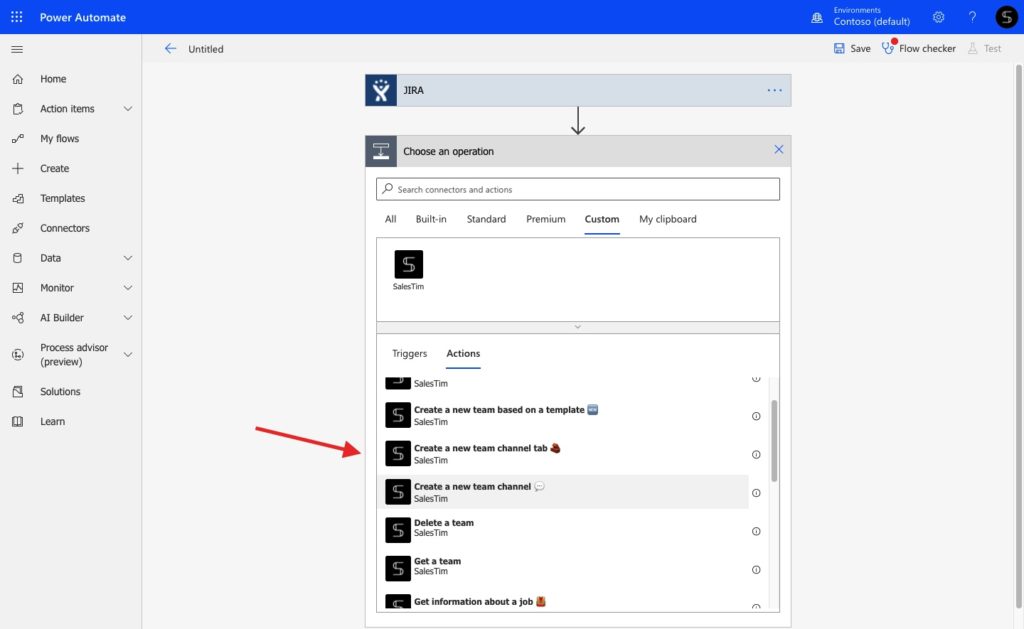
Book the call with our team to explore who nBold connector can streamline processes in your organization (link)
How to build a Project Management template in Teams?
Finally, explore how to build project management Teams template in just a few steps:
Step 1. Install nBold from Microsoft Teams store: settings are available only for Admin users.
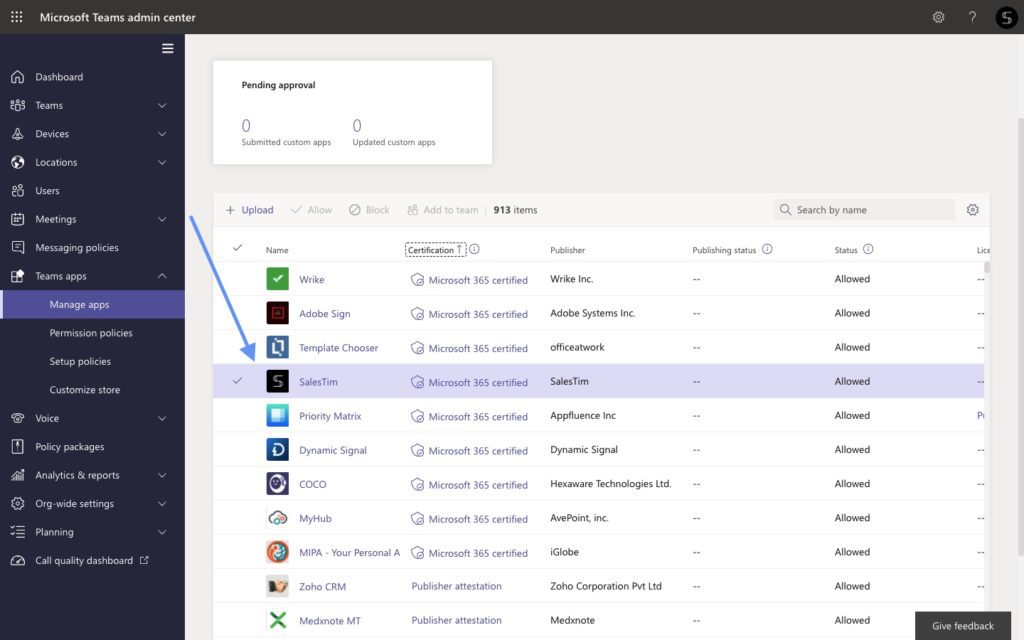
Step 2. As a Global Admin or Template Catalog Manager, go to the Catalog tab and click on +New template. Choose the original team that should be cloned.
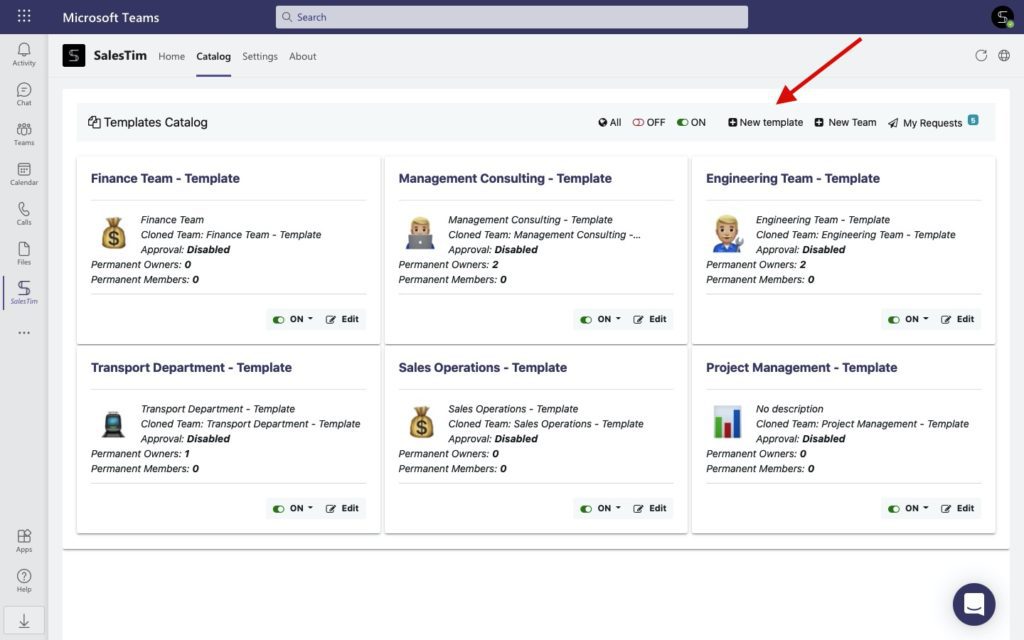
Step 3. Manage governance policies during the template creation. Establish a naming algorithm, define who can use your template, add permanent owners and members, and so on.
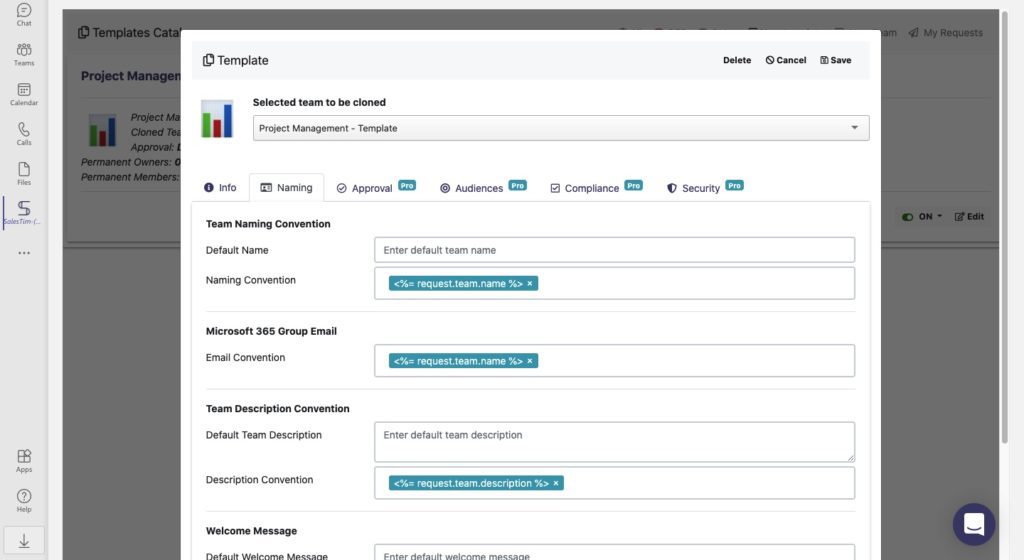
Step 4. After saving your template will be added to the template catalog. Now end-users will see your template and will be able to create teams from your template (if you didn’t limit the usage of your template by targeting audience rules)
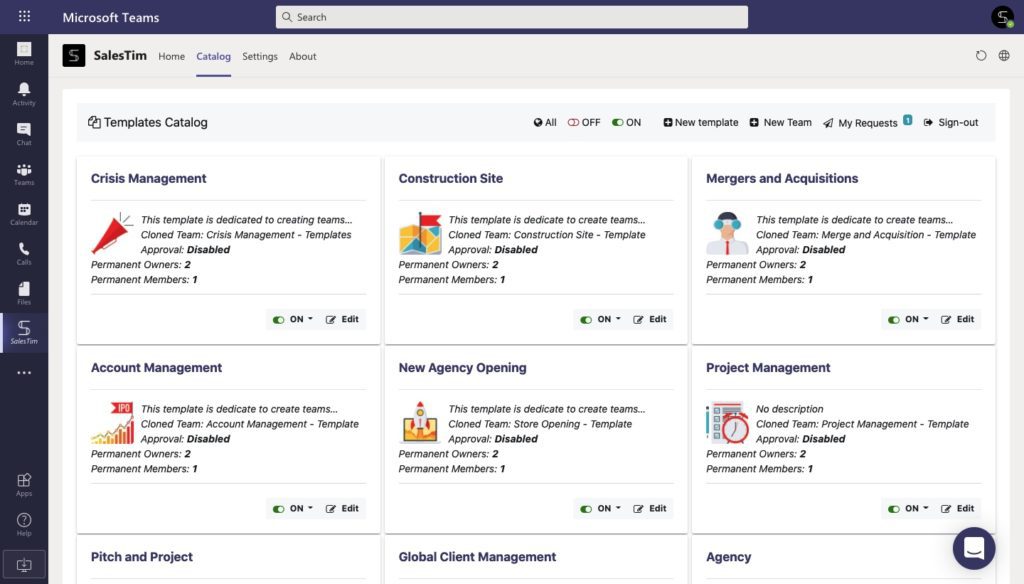
When an end-user is creating a team from your project management template, they will get a fully provisioned team in just a few seconds. Copied standard and private channels, tabs with apps, pre-build Planner, cloned files and folders, and so on will be available with a new team created from the project management collaboration template.
Book a demo to learn how to build your own Collaboration Template.
